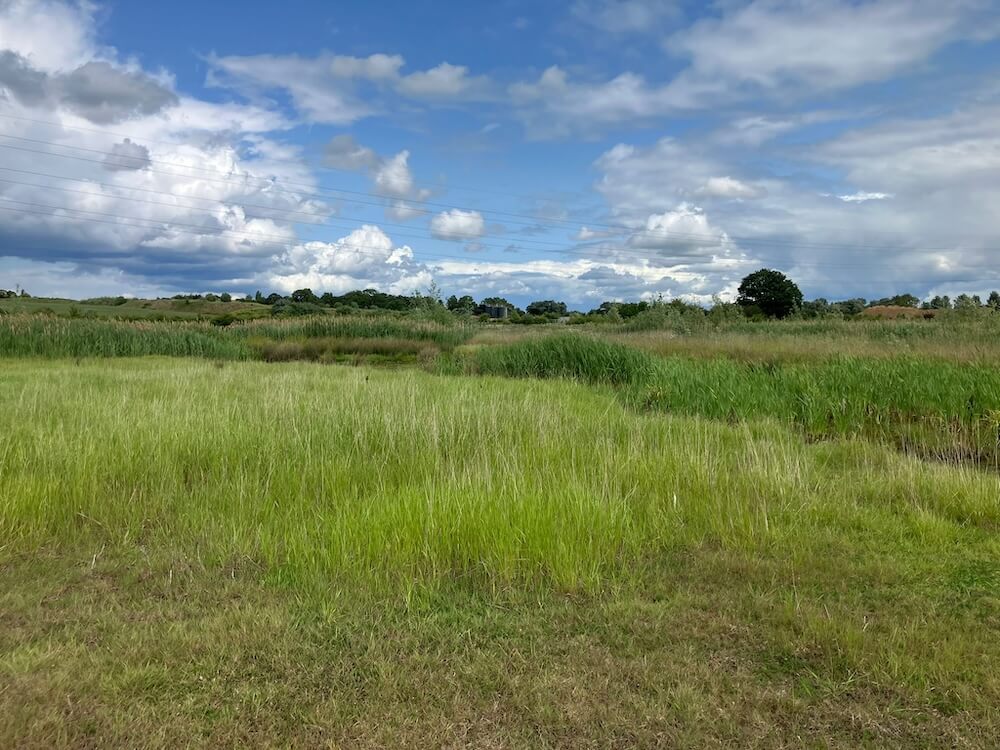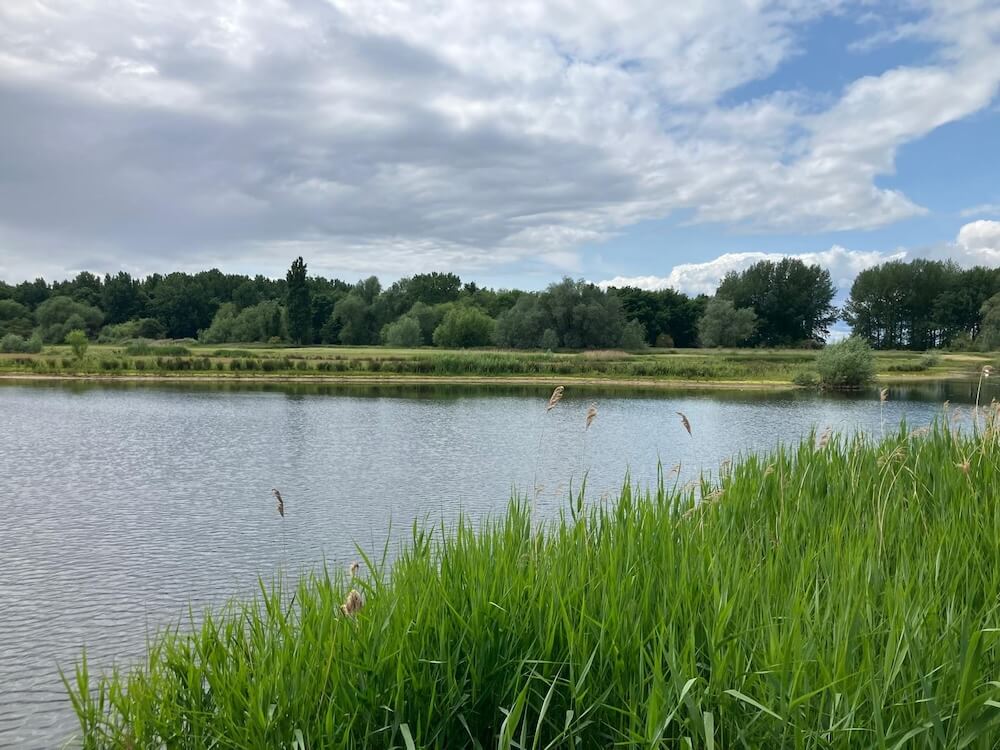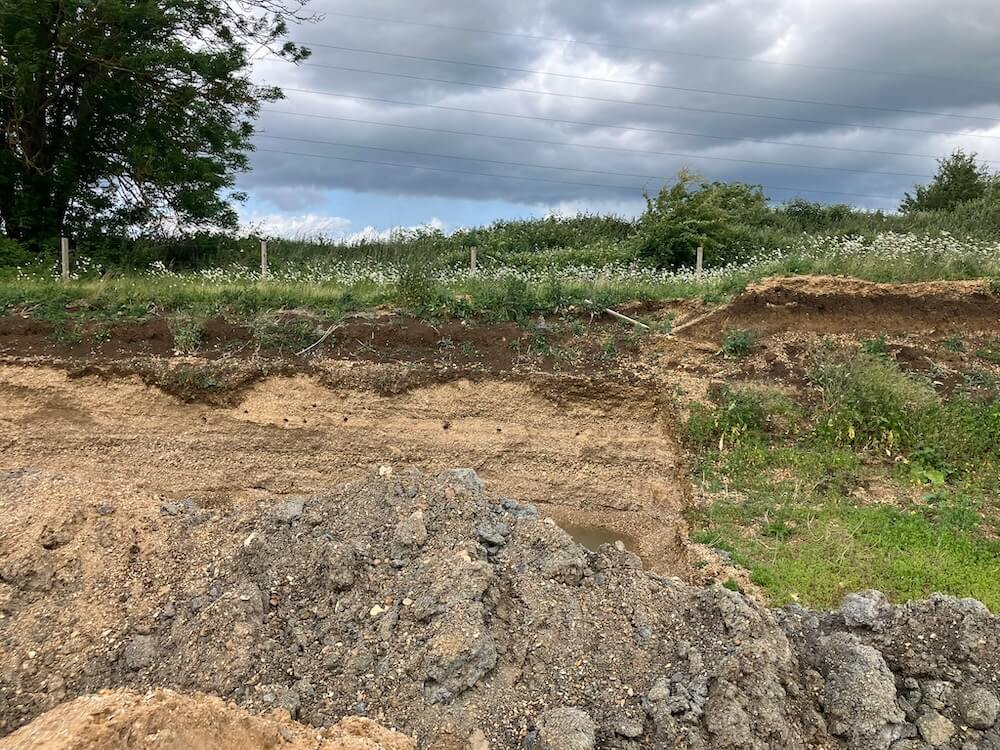
At Willington Lock Quarry, restoration isn’t just an afterthought – it’s a central part of the site’s long-term strategy. ESP has been proud to lead this transformation, working closely with Breedon to design, implement and manage habitat creation and ecological enhancements that delivers measurable biodiversity gains.
Located in the heart of Bedfordshire, Willington Lock Quarry is fast becoming a showcase for how industry and ecology can go hand-in-hand. With the support of our expert team, the site now supports a growing network of public footpaths, diverse wildlife habitats and carefully managed wetland escapes – all delivered with both nature and people in mind.
Enhancing Public Access with a New Accessible Footbridge
One of the key features added recently is a new bridge on a public footpath that winds around a restored lake. Completed last year, it may not be the most visually striking structure at first glance, but it meets the standards of the Disability Discrimination Act (DDA) and is built to last, with a steel frame designed for a 70-year lifespan.
As vegetation around the bridge matures, it will soften its appearance and help it to blend beautifully into the landscape. The footpath itself forms part of a wider trail network through the Great Ouse valley, meandering past areas that have become rich in wildlife thanks to the careful restoration of former sand and gravel pits.

Active Habitat Management to Support Biodiversity
We’re also actively managing restored areas to support biodiversity. One such lake is a shining example of this success, now serving as a vital nesting site for wading birds, thanks in part to cutting back willow growth on islands by boat. This seemingly small action plays a big role, reducing perches for predators and making the habitat more appealing for birds that need open ground to nest.
Phase 1C Triangular Wetland: A Biodiversity Hotspot
Another standout area is the Phase 1C triangular wetland, restored with careful attention to detail. The team created a mosaic wetland habitat with varied micro-topography and intentionally left out nutrient-rich topsoil, fostering the ideal conditions for a diversity of species. Ongoing monitoring is key here: regular breeding bird and lepidoptera (butterfly and moth) surveys are helping to build a clear picture of the site’s ecological value.
In the most recent bird surveys, 36 species were recorded, including 3 of Red conservation concern and 9 on the Amber list. Two species, Reed Bunting and Common Whitethroat, are Local Biodiversity Action Plan (LBAP) priorities. Breeding pairs of Reed Bunting, Eurasian Reed Warbler and Sedge Warbler were confirmed, with probable breeding of another 13 species.
The lepidoptera results are equally impressive: 299 species have been recorded so far, including 9 that are ‘Nationally Notable’ and 58 considered ‘Local’. Several species are also considered extremely rare or uncommon in Bedfordshire. This richness alone could warrant County Wildlife Site designation, based purely on moth and butterfly records. And as surveys continue, the evidence for long-term breeding populations will only strengthen.

Supporting Sand Martin Nesting in Active Quarry Areas
Even the active quarry areas are showing signs of supporting nature. Quarries often provide temporary habitats for wildlife which are largely unrecognised in the data but are no less valuable for UK populations as a whole. Quarry manager Simon Bryant has carved steeper faces into the gravel pit edges to attract sand martins, a strategy that’s working. These agile birds have already been seen darting in and out of nest holes, though they move too quickly to be caught on camera!

A Model for Nature-Positive Restoration
At Willington Lock Quarry, careful planning, commitment to habitat creation and small but meaningful management interventions are coming together to build something special. It’s a place where industry and ecology work side by side, showing what’s possible when restoration is done with both wildlife and people in mind. We’re proud to support the planning, implementation, and aftercare of these restoration efforts.
Contact Us
If you’re interested in learning more about how ESP can support your restoration or habitat creation projects, or if you’d like to discuss opportunities for collaboration, please don’t hesitate to get in touch. Our team of experts is ready to help you deliver nature-positive solutions tailored to your site’s unique needs. Contact us today by emailing enquiries@esp.uk.net or calling 01902 771 311.